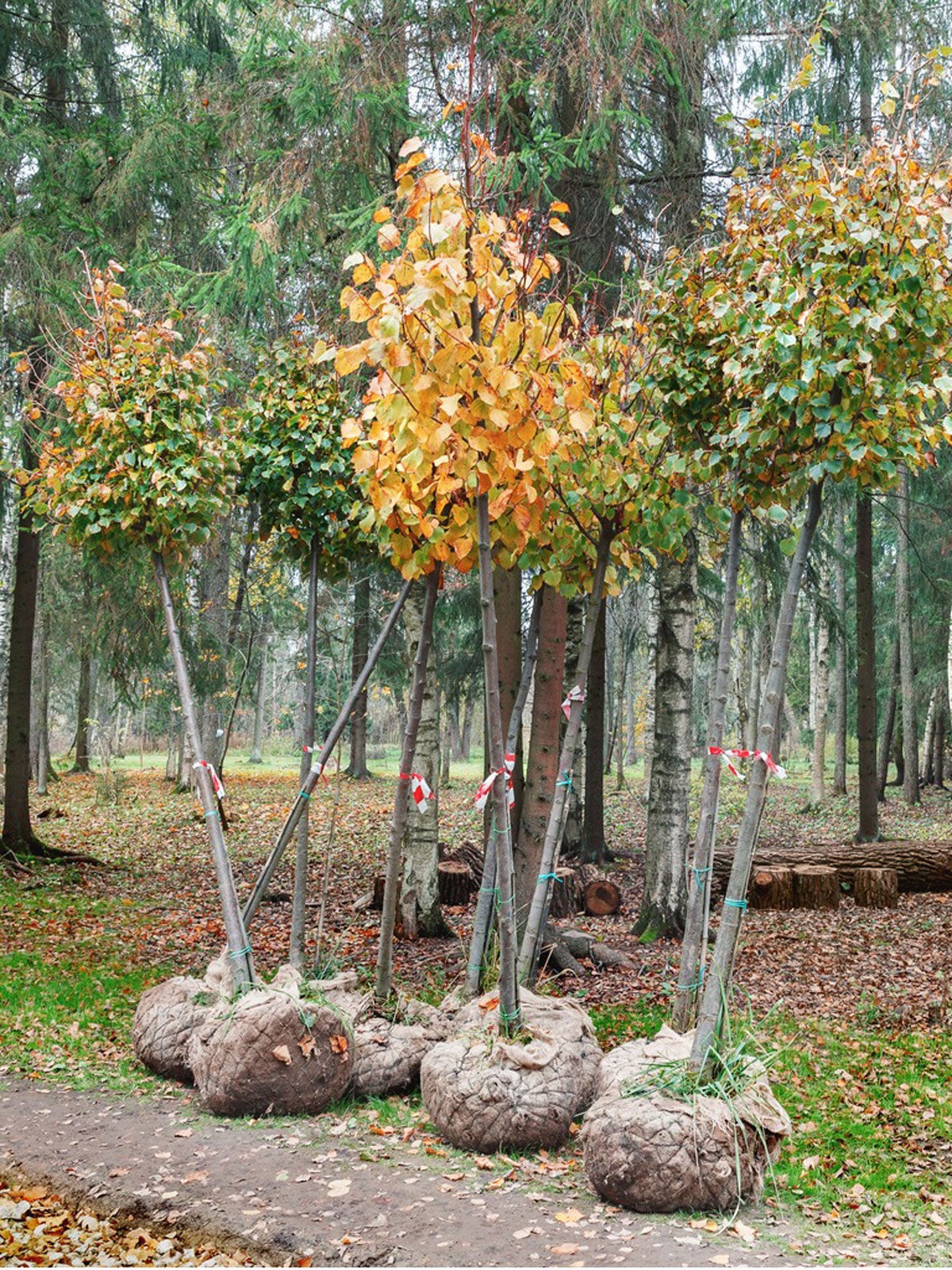Ball Burlap Tree Planting: Do You Remove Burlap When Planting A Tree


You can fill your backyard with trees for less money if you select balled and burlapped trees rather than container-grown trees. These are trees that are grown in the field, then their root balls are dug out and wrapped in burlap tree bags for sale to homeowners.
But being economical isn’t the only reason to think about planting a burlap tree. Read on for information about the advantages of ball/burlap tree planting and the best practices for planting these trees.
About Trees Wrapped in Burlap
Trees sold in garden stores are either container plants, bare root trees, or trees wrapped in burlap. That is, the root ball is dug out of the ground then wrapped in burlap to keep it together until it is replanted.
A balled and burlapped tree costs more and weighs more than a bare root tree that is sold without any soil around its roots. However, it costs less and weighs less than a container tree.
Do You Remove Burlap When Planting a Tree?
One of the most common questions about ball/burlap tree planting involves the fate of the burlap. Do you remove burlap when planting a tree? That depends on whether it is natural or synthetic burlap.
Synthetic burlap will not decompose in soil, so it is important to remove all plastic and artificial burlap. Remove it entirely. If that is not possible, cut it as far down the root ball as possible so that the soil in the root ball is in contact with the soil in the new planting hole.
On the other hand, natural burlap will rot into the soil in a moist climate. If you live in a dry climate, receiving less than 20 inches (51 cm.) of rain a year, remove all burlap before planting. In either case, remove the burlap from the top of the root ball to allow water to easily enter.
Sign up for the Gardening Know How newsletter today and receive a free copy of our e-book "How to Grow Delicious Tomatoes".
If you aren’t sure what type of burlap you have, burn a corner. If it burns with a flame then turns to ash, it is natural. Any other result means that it isn’t.
Planting a Burlap Tree
No matter how carefully your balled and burlapped tree root ball was removed from the ground, the vast majority of feeder roots were left behind. That means that you need to invest time and effort in giving the tree a quality planting hole.
Make the holes about three times as wide as the soil balls. The wider they are, the more likely it is that your trees wrapped in burlap will thrive. On the other hand, only dig it as deep as the soil ball is tall.
Assure the tree has excellent drainage before planting. And when you do lower the rootball into the ground, get help if you need to in order to be gentle. Dropping the roots into the hole can be very detrimental to the tree’s growth.

Teo Spengler is a master gardener and a docent at the San Francisco Botanical Garden, where she hosts public tours. She has studied horticulture and written about nature, trees, plants, and gardening for more than two decades, following a career as an attorney and legal writer. Her extended family includes some 30 houseplants and hundreds of outdoor plants, including 250 trees, which are her main passion. Spengler currently splits her life between San Francisco and the French Basque Country, though she was raised in Alaska, giving her experience of gardening in a range of climates.